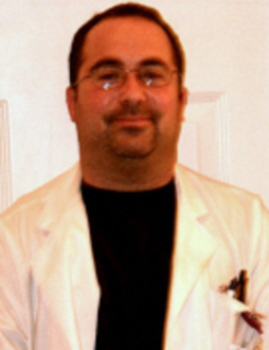This text-based course is a written transcript of the course, "Dysphagia in the Trach and Vent Population" presented by Eric Blicker, M.A., CCC SLP.D, BRS S on March 3, 2011.
Click Here to View Supplemental Handouts
This text is being provided by Communication Access Realtime Translation in order to facilitate communication accessibility and may not be a totally verbatim record of the proceedings.
>> Amy Natho: I would like to welcome you to the SpeechPathlogy.com e learning expert seminar entitled "Dysphagia in the Trach and Vent Population." I'm Amy Natho and I'll be moderating today. At this time it is my great pleasure to introduce Dr. Eric Blicker. Dr. Eric Blicker, M.A., CCC SLP.D, BRS S is an American Speech Language Hearing Association Board Recognized Specialist in swallowing disorders. Eric received his doctoral degree from Nova Southeastern University and was trained in Flexible Endoscopic Evaluation of Swallowing with Sensory Testing (FEESST) by Dr. Jonathan Aviv, the otolaryngologist who developed FEESST. Eric has started multiple Flexible Endoscopic Evaluation of Swallowing (FEES) programs in the south Florida area while training speech language pathologists and physicians in the process. Dr. Blicker has lectured at Florida International University, Florida State University, and Boston University. Moreover, he has provided FEES training courses in Connecticut, Massachusetts, Florida, Missouri, and California for licensed speech language pathologists. Dr. Blicker owns a portable FEES company that provides testing services throughout the state of Florida. His clinical FEES experience includes working in long term acute care, inpatient acute care, outpatient hospitals, skilled nursing facilities, outpatient otolaryngology, and outpatient neurology settings. So welcome, Eric. Thank you so much for being here and sharing your expertise with us today.
[Applause]
>> Dr. Eric Blicker: I just wanted to thank you for the very nice introduction on "Dysphagia in the Trach and Vent Population." Before we begin, I'll tell you more about my background. I've worked with trach and vent populations for the last 10 years and have done this in every setting. Presently, I work in three hospital units where they're entirely trach and vent patient oriented and populated, as well as working with an otolaryngology group where I see a lot of outpatients as well. Some of these inpatient hospitals are trauma based, so when I'm drawing on my experiences, I do see trached patients in skilled nursing and acute hospitals and trauma units, and also in an outpatient setting as well.
Tracheostomy Tubes
When we refer to tracheostomy, we're talking about the actual opening that is made for the procedure. When we speak of tracheotomy, that is the actual procedure. I use the words trach and vent in the title meaning that we're talking about trached patients who are or are not on ventilators. I'm not speaking of patients who are intubated. I wanted to make that delineation.
Why have a tracheostomy tube?
- It provides positive pressure ventilation. Positive pressure ventilation is when air is pushing into the airway to inflate the lungs. This is done when patients are on the ventilator.
- Airway patency to retain a patient's airway and ensure there is a path for air exchange.
- Airway protection from aspiration in head injury or comatose patients and post operative neurosurgical patients. In my experience with trauma and head injury patients or patients that are comatose, they may have longer term ventilation needs, so to maintain an endotracheal tube through the vocal cords for a prolonged time period is not ideal. These patients often have a tracheotomy as they recover their function. Their airway is being protected, generally meaning that the cuff will be inflated to try to help prevent large volume aspiration. The cuff will also remain inflated with these patients to maintain their ventilation.
